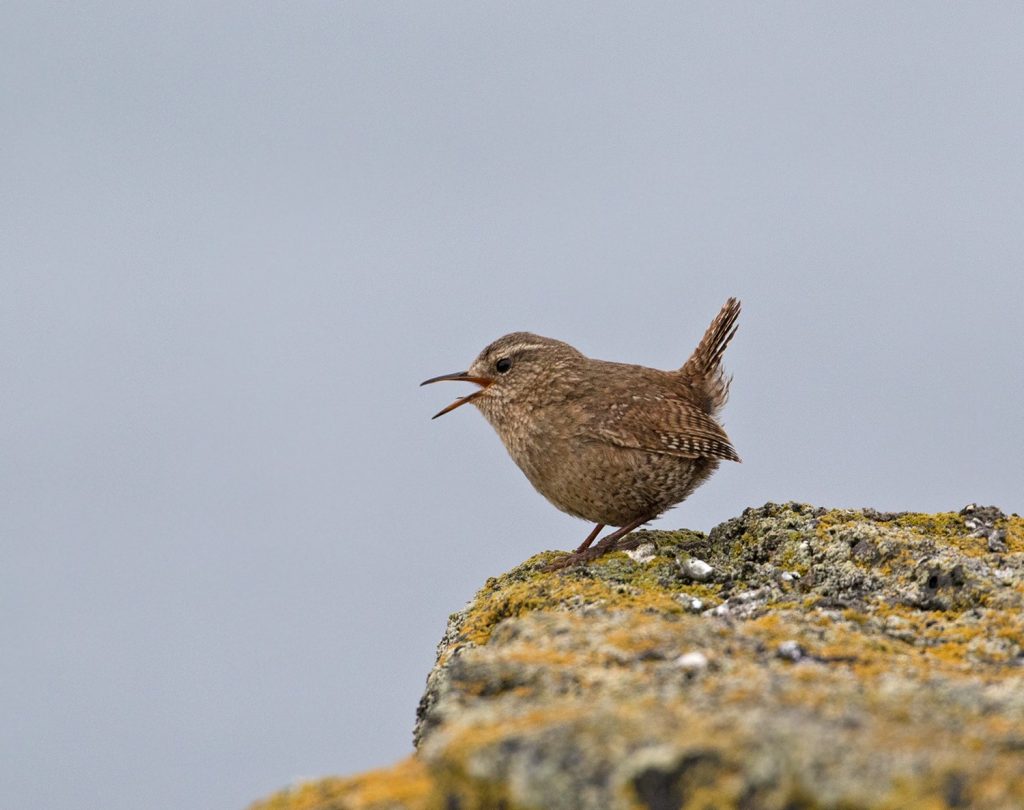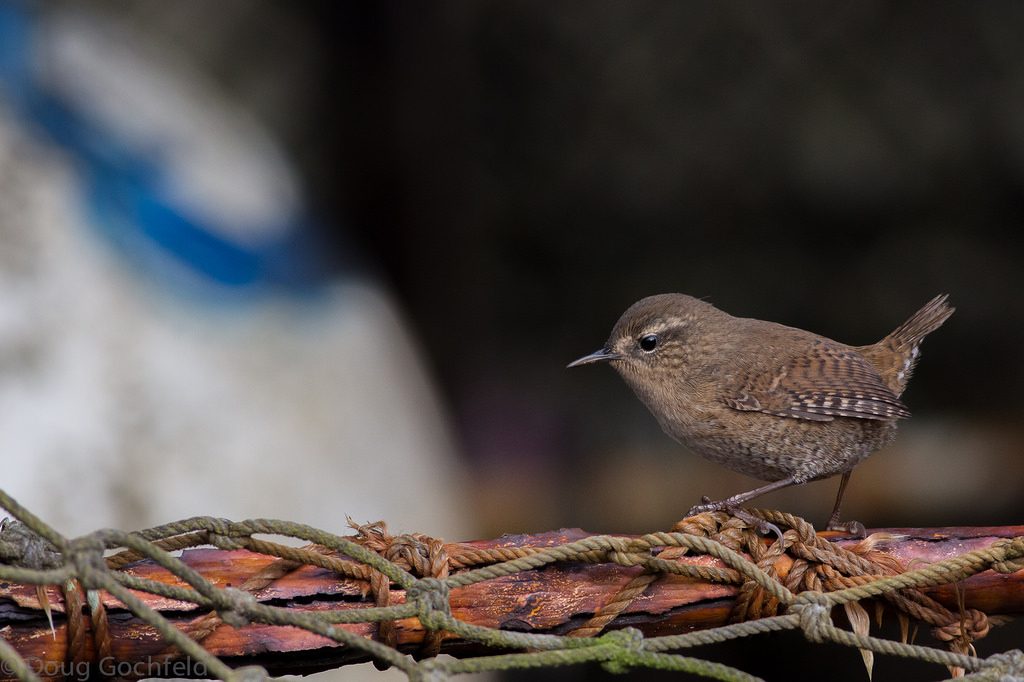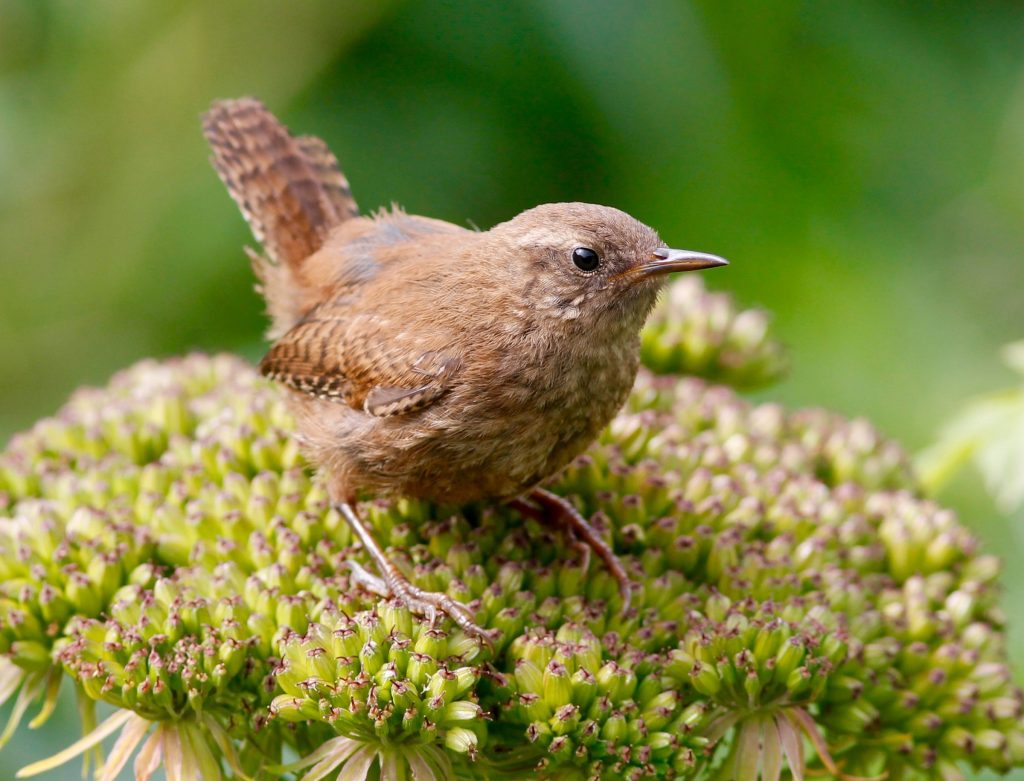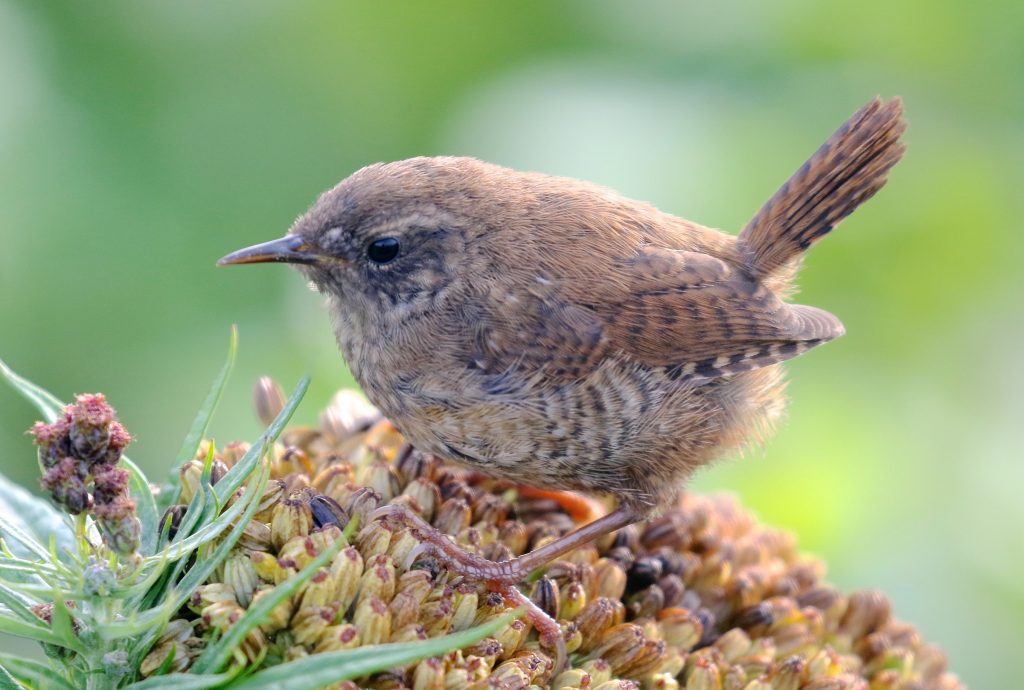This is one of only three species of passerine that is a permanent resident in the Pribilofs. While always present in the islands, the populations on various islands are quite different with regular major population shifts due to winter weather. On St. George Island, this species is an uncommon to abundant resident depending on the year and season whereas it is uncommon to common on Otter Island, and absent on Walrus Island. On St. Paul Island, this species is present in most years though the population is best described as erratic or ephemeral, as poor winter conditions may cause the small population to be severely reduced or even extirpated in some years. This species is most easily seen in late May and early June when they sing, or again in late summer and fall when fledglings appear.
The first records of this species on St. Paul Island are from 1914 and 1915, though this species had been known from St. George Island since the early days of scientific observations in the 1860s (the type specimen for the locally endemic subspecies was collected on 17 August 1868). It has been found on St. Paul Island in each year since 1993, but it was described as absent from the island from 1986-1988. It was then recorded again in 1989. In poor years there may be as few as one or two pairs present on St. Paul Island, while in more prosperous times as many as 25 or more pairs. These fluctuations are directly related to the severity of the winter weather and the extent of the sea ice each year, which impacts the bird’s ability to forage in the intertidal zone as well as survive the winter conditions. On St. George Island this species is found in much larger numbers and in some years can be described as locally abundant. Reports of hundreds of wrens in a single valley have been made there; however, the species is still impacted by winter weather and may be much less common in some years. The species was considered numerous on Otter Island in 1953 and the population still appears to be much larger there than on St. Paul Island in recent years.




